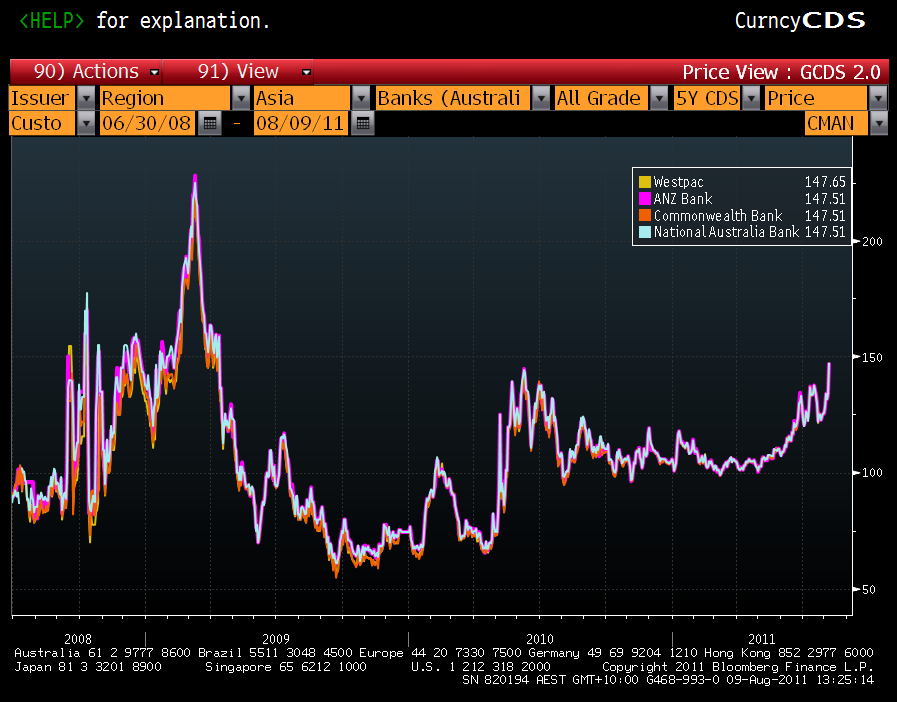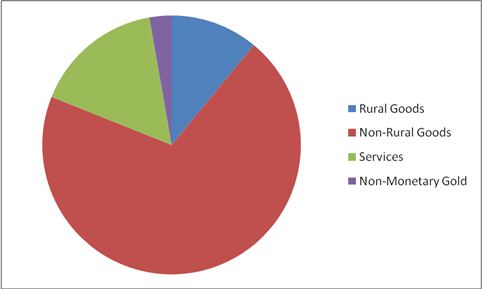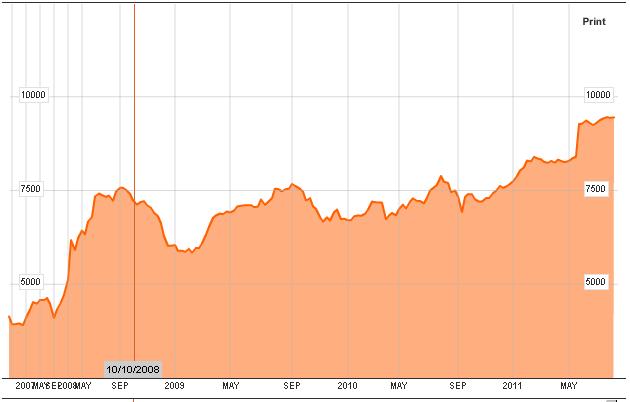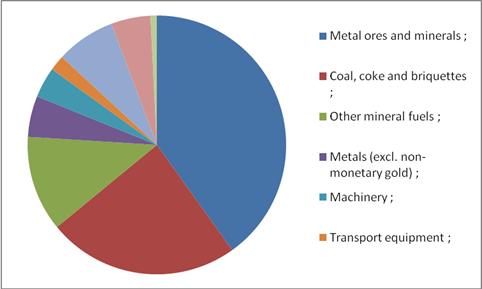As I wrote this morning, I’m of the view that global equity markets have begun to price a forthcoming Western recession. Since then markets have rallied hard on the hope of QE3 tomorrow, which would change the game, but I thought anyway that I would trace the possible lines of weakness in the global economy and see how they lead back to Australia.
I can think of three potential points of transmission of global weakness into the Australian economy. The first is bank funding pressures arising from rising funding costs. As I pointed out earlier today, big bank CDS prices have risen very quickly:

CDS prices can be seen as a proxy for the banks underlying funding costs. Equally as we have seen over the past year in the context of European sovereigns they can also be used as a pressure point to undermine confidence which then drives funding costs higher in a negative spiral. However, for real damage to transpire, as seen in 2008, funding pressures must remain elevated for an extended period.
Even then, if liability pressures overwhelm the banks, the Australian Federal government can step in and guarantee the debt, making it manageable. That is, so long as the Government retains its AAA rating and, crucially, that markets believe that Australia, unlike the most of the rest of the Western developed world, can actually afford to do so.
The second point of transmission is through a crash in commodity prices. That is going to hinge on what happens in China. The notion that China can withstand western economic weakness is bunkum – Chinese growth will be damaged by any fall in Western consumption via its exports.
The process of a recession is actually well understood. Following whatever shock it is that upsets a business cycle – whether that be a financial crisis or rise in interest rates – consumers retrench their spending. Businesses suddenly find themselves with excess inventories. They cancel new orders for more stock and begin to draw down on those inventories. This knocks the stall onto production. All businesses begin to sack workers to address a suddenly excessive cost base which feeds back into the negative inventory cycle by hitting demand.
It is similar with the services sector of the economy. People stop spending in restaurants and cafes, stop hiring consultants or having their car washed by someone else. They might even switch from Foxtel to Freeview. But the impact is the same, excess inventory in services and a negative feedback loop until consumers come back and spend.
So, if the Western powers re-enter recession, China losses its biggest customers and markets and by definition Chinese production must fall, just as it did in 2008:

As Chinese production slows, it’s businesses too will sack workers and its own internal inventory cycle will transpire.
That will inevitably also damage Chinese demand for commodities and prices will fall, including those exported by Australia. Here are a couple of charts of Australia’s export mix. Firstly, note the dominance of non-rural goods:

When we break up the non-rural goods exports, we find it is dominated by ores and coal:
Now, I can hear the China watchers amongst you cry “those commodities are for fixed-investment projects” not Chinese export production. And you’d be right. But, I’m willing to bet that any hit to Chinese exports and the subsequent internal business cycle would also result in a slowdown of construction activity, at least for a time, and until the government can launch a new program of bridges to nowhere.
Moreover, it would not take that much of a slowdown in Chinese commodity demand to set off a second inventory cycle, this time in their commodity stocks. During the 2009 recession, for a time China drew down on its commodity inventories as demand fell away. Following is a chart of iron ore stocks at Chinese ports. Note the big dip in late 2008:

Note as well how much higher current ore stocks are. China could easily draw down for a period and severely disrupt iron ore pricing. The same thing could transpire with coaking coal.
However, Australia has one protection from this outcome, the quarterly contract pricing mechanisms for iron and coal would ensure that falls in prices were delayed and, because they’re averaged from the a time series of the spot price, prices would fall more slowly as well. So although falls in the vital bulk commodity exports would thump GDP, they would not do so straight away.
But, that brings us to the third point of transmission. In an economy where one part is “booming” and the other is virtually already in recession, this could be enough to tip the whole economy over as it feeds into what is happening already. Consumption would fall further, even from current weak levels, along with the destruction of wealth in the falls in the sharemarket, falling house prices and increasing debt revulsion. This could lead Australian business further into its own internal inventory cycle, with all of the rises in unemployment and falls in GDP that that entails.
This is all quite plausible without imagining anything disastrous transpiring in the housing market. Of course, if a housing bust did ensue, things would get very nasty indeed.


